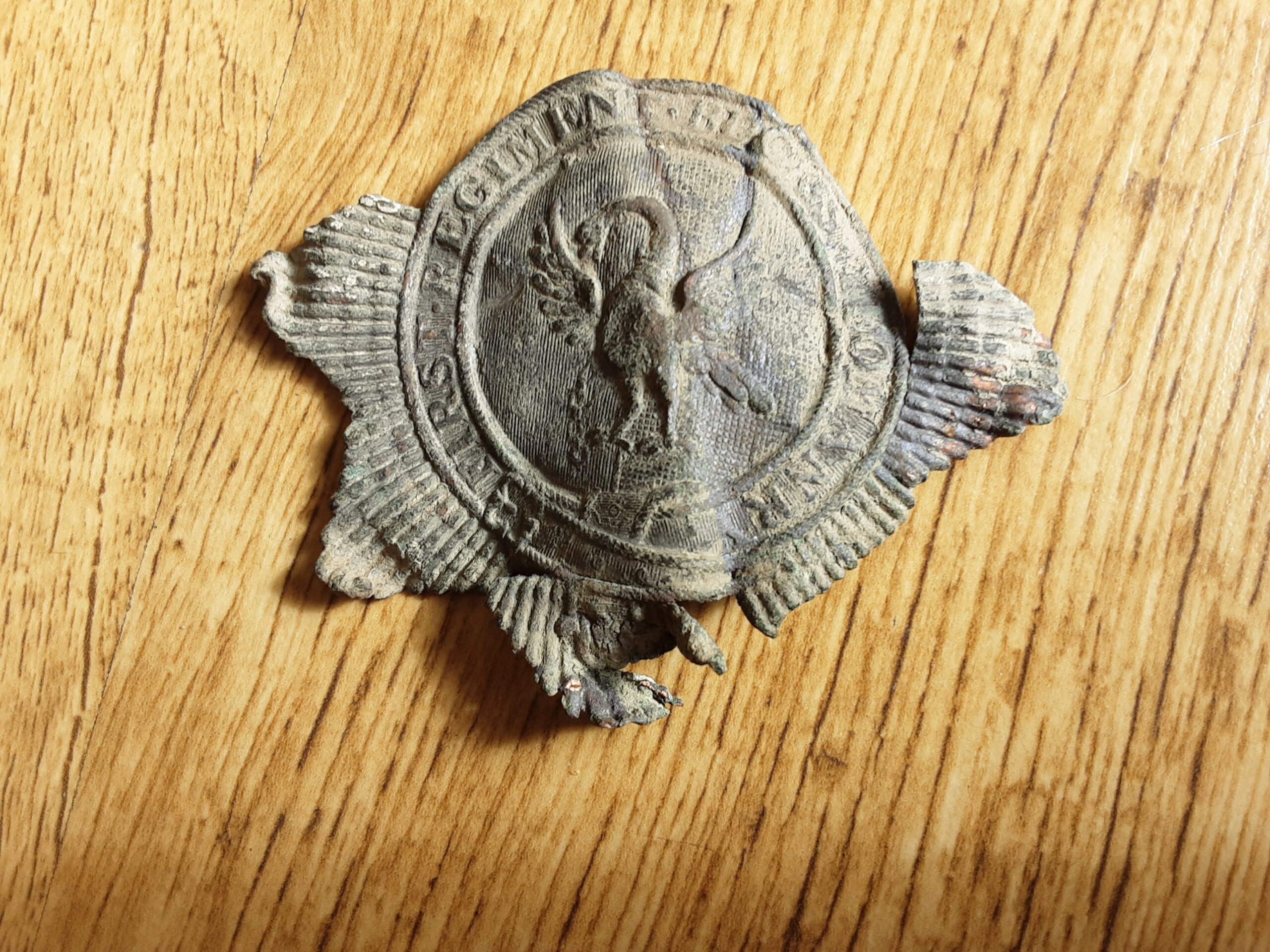Found at Hambleden in Bucks by a metal detectorist, who has kindly donated it to the Trust, the copper alloy badge inscribed 1st Regiment Bucks Yeomanry appears to be the ornament from the right side of a Tarleton Helmet as worn between 1803 and around 1822 when the regiment adopted the shako. The use of such a device is recorded for other yeomanry corps with pattern books showing a wide range of different styles. Here, it is the swan of Buckinghamshire.
The Trust’s existing example of a Tarleton helmet carries a title strip embossed ‘Bucks Yeomanry’, and a ‘GR’ cypher within an en-crowned garter above a scroll inscribed ‘Strike Home’. Consequently, this find is a particularly intriguing discovery.
The Bucks Yeomanry was formed as a result of a meeting at Aylesbury on 3 May 1794, the original six troops at Amersham, Aylesbury, Buckingham, Burnham, High Wycombe, and Newport Pagnell. After July 1803 the yeomanry was reorganised into three regiments – a 1st or Southern, 2nd or Mid, and 3rd or Northern Bucks Regiments. William, Lord Grenville commanded the 1st (Southern) Regiment from 1803 to 1806, and was then succeeded by Sir William Clayton of Harleyford. In May 1815 it had a total strength of 328 men in nine troops. From 1804 to 1816, yeomen were expected to attend 12 days’ training per annum in order to qualify for exemption from the militia ballot. In 1816 the requirement was reduced to eight days inclusive of two days’ travel to and from the assembly point. The 1st Regiment’s annual training was at High Wycombe in 1820, 1821 and 1825 and 1827, at Marlow in 1822 and 1823, at Salt Hill in 1824 and at Amersham in 1826. The regiment was disbanded on 5 December 1827 as it had not been used in aid of the civil power in the previous ten years although it had done duty at the coronation of King George IV in 1821.
